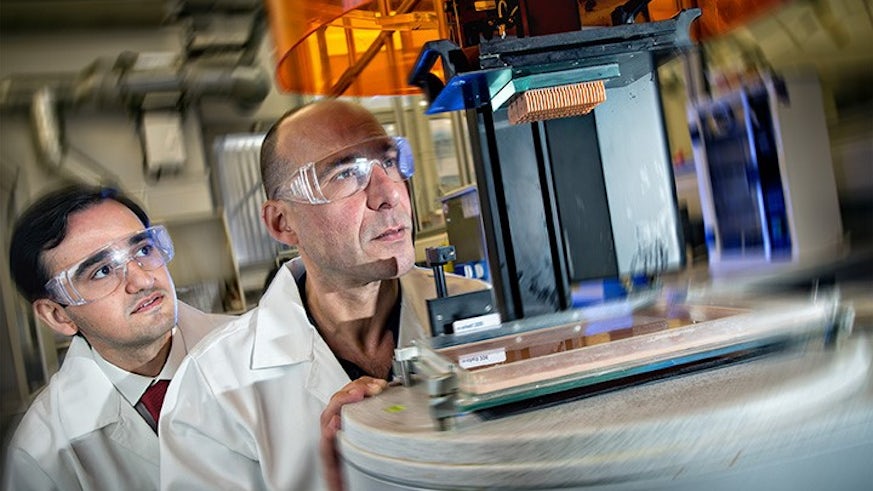Optimising 3D Printing Operations: Cardiff University Publication
22 May 2019

A collective of Cardiff University academics, including members of the Panalpina Research Centre (PARC), has recently collaborated on an innovative and extremely thought-provoking paper on additive manufacturing (or 3D printing).
The paper, titled “Economies of collaboration in build-to-model operations”, has just been published by Wiley, where it is available online and is free for all readers to download.
The paper explores the question of how best to approach order fulfilment in the 3D printing industry, using an existing case study from Panalpina and Shapeways. Through their research the authors propose a new manufacturing mode – Build to Model (BTM) – which encapsulates all the manufacturing and logistics information required to produce and deliver 3D printed products to their final customer.
Traditional approaches typically keep manufacturing and logistics information separate, leading to complexity in the management of material and information flows within the supply chain. The BTM approach provides a unified mechanism, which ensures all the information needed to fulfil and deliver an order is in one place. BTM enables new approaches to production management and outsourcing.
“The partial outsourcing relationship between Shapeways and Panalpina demonstrates the potential for general purpose manufacturing technology to disrupt the conventional supply chain model.”
Panalpina, one of the world’s top third party logistics organisations, introduced a 3D printing operation several years’ ago at their facility in Eindhoven, in the Netherlands. The purpose of the facility was to produce 3D printed parts for Shapeways, one of the world’s top additive manufacturing producers for the consumer market. Together, the two companies developed a collaborative model of outsourced 3D printing, forming the basis of this study.
The data from the Panalpina-Shapeways operation facilitated the exploration of outsourcing practices in 3D printing, which allowed the Cardiff team to address several questions in the paper, including:
What level of outsourcing should be used for 3DP, and in what situations?
How should 3DP companies collaborate and operate to grow and expand profitably?
In this paper, the existing outsourced operation is theoretically expanded, allowing for investigation into how organisations can improve the performance of 3D printing build-to-model through bidirectional partial outsourcing and order book smoothing.
“The future role of 3D printing in supply chains depends on developing new ways of operating to simplify current supply chains and to create new types of supply structures.”
To get the most out of this publication we thoroughly recommend taking the time to read through it in detail. The open-access nature of this paper is unusual and a testament to the growth of collaboration and information sharing promoted by both PARC and Cardiff University.
The publication of the paper by Wiley is indicative of the high levels of academic rigour and innovative thinking demonstrated by the Cardiff University team. We at PARC are extremely proud of their achievement and invite anyone with an interest in how to optimise their 3D printing operations strategy to read and learn from it.